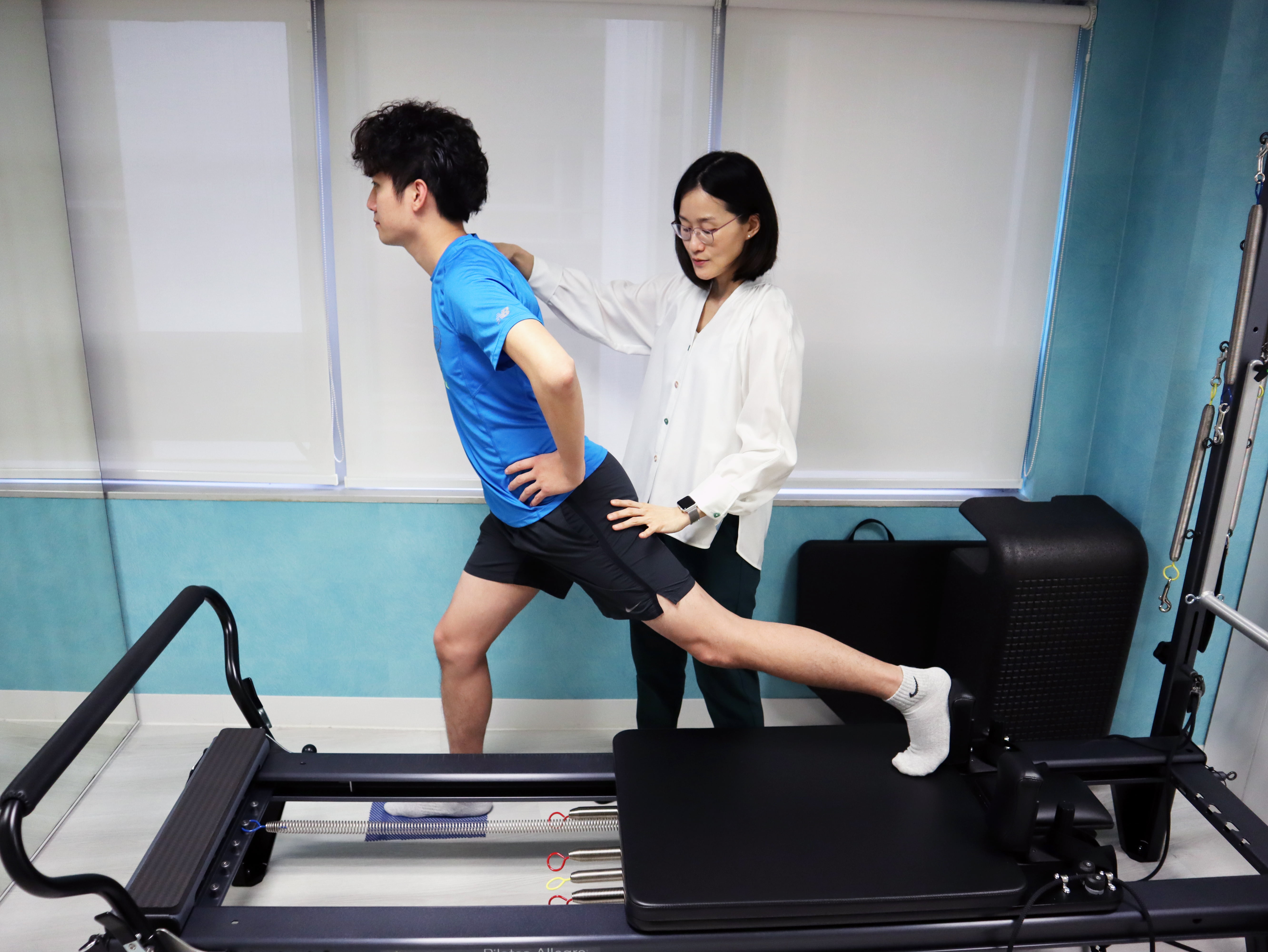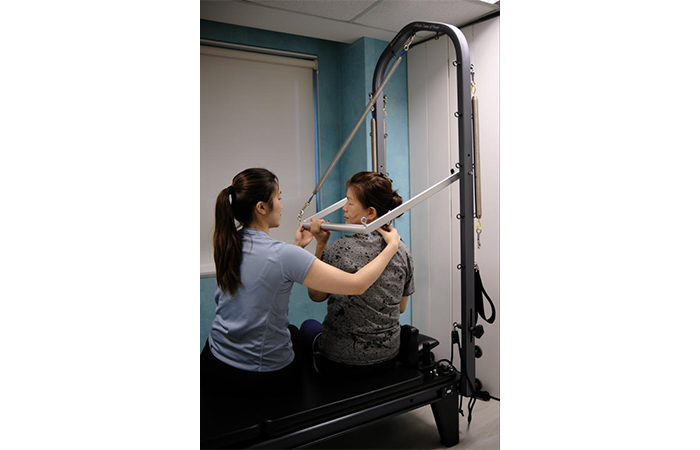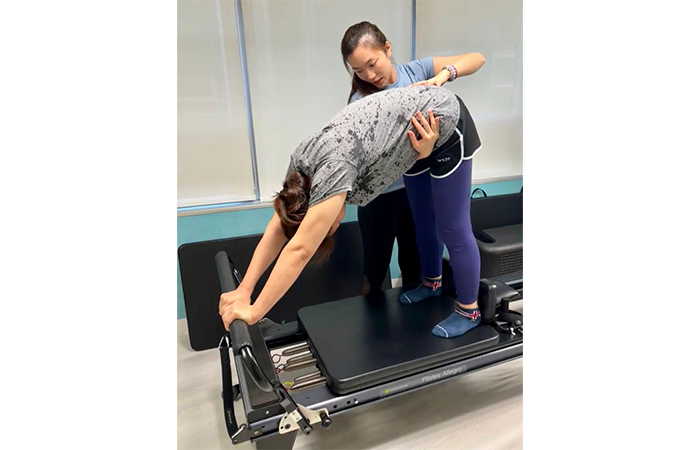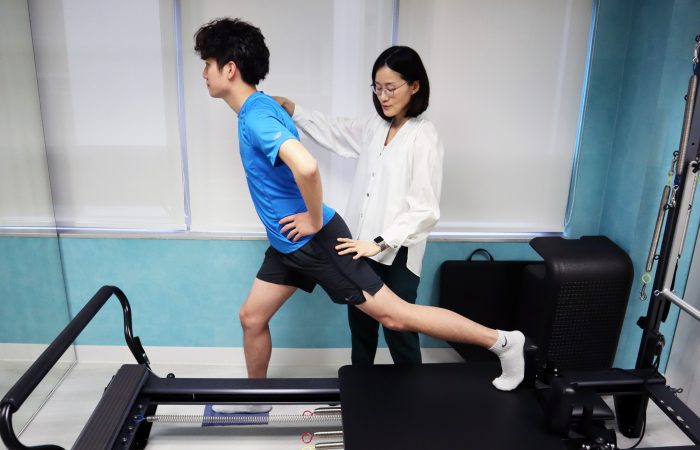
Pilates
Enhance core stability and strength, tone and build lean muscles, gain mobility and flexibility, optimize postural alignments and improve coordination
What’s so fascinating about Pilates Method?
Not because of its constant popularity among celebrities and famous athletes, but the plentiful of benefits this exercise regime of Pilates could bring about.
Pilates Method is a series of exercises smartly created by Joseph Pilates. It is a movement system aiming at physical and mental conditioning. Based on the initial Pilates mat-work exercises, Joseph also engineered a range of Pilates apparatus to allow modulation of exercises intensity and offer various “environments” for exercise progression and challenges. Body orientation to gravity and spring resistance can be altered to progress or regress the exercise challenge on muscle strength and proprioception, meeting physical needs of each individual.
With the carefully chosen exercises repertoire, together with precise instructions and feedbacks, we could enhance core stability and strength, tone and build lean muscles, gain mobility and flexibility, optimize postural alignments and improve coordination.
When Physio meets Pilates
Joe Pilates embraced the concepts of “whole body health”, i.e., development of the body, the mind and the spirit in complete coordination with each other though exercise, proper diets, good hygiene and sleep.
In his book Return to Life through Contrology, Joe stated “civilization impairs physical fitness”, which echoes even more strongly in our modern society. Prolonged sitting from deskwork, forward head posture related to computer use, sustained head down posture when using mobile devices usage, slouching in sofa binge-watching TV dramas…etc. All these would not sound unfamiliar to us. Trapping in a loop with these sedentary life routines guarantee poor postures and muscle imbalances (both weakness and tightness). Adverse postural patterns such as round shoulders, forward head postures, sway back and flat back postures, are easily developed, which might eventually lead to chronic neck and back pain. Research revealed abnormal activation and magnitude of core muscles, as well as decreased trunk awareness and control in subjects experienced lower back pain.
Pilates believed that core control was the essence of controlling human movement. In various scientific researches results supported his concept, recognizing the importance of core/ trunk muscles stiffening in preparation of movements of our limbs, while appropriate amount of core stability could significantly facilitate movements.
Pilates-evolved exercises targets, not on the maximum voluntary muscle contraction, but how to effectively in recruiting the correct muscles groups, to enhance energy efficiency and quality of performance. Putting it in a simple way, muscle activation should be “as much as necessary ,as little as possible”.
Postural muscles (type I fibres) are the muscles we mostly use in our day-to-day activities. Building up an appropriate motor strategy of these muscles (right sequence of muscle recruitment) , static and dynamic posture can be improved with lower risk of injuries.
Via the uniqueness of low-impact exercises and modifiable resistance and base of support, Pilates exercises could also avoid over-aggressive or premature mobilization, reducing to chance of re-injury during the rehabilitation process.
In a Pilates-based rehabilitation, physiotherapists would base on the knowledge of neuromusculoskeletal physiology and biomechanical principles, and accurately identify the faulty postural alignment and faulty movement patterns. Incorporating the scientific-informed motor learning theories, our therapists would prescribe exercises with suitable level of the challenge to patients with respect to their stage of rehabilitation and ability.
Pilates system is a comprehensive exercise methods of which our therapists frequently implement into patients’ injury rehabilitation and movement re-education program.
Pilates is effective for
- Chronic back and neck pain
- Postural control problems
- Core muscle weakness
- Pre-natal /post-natal


